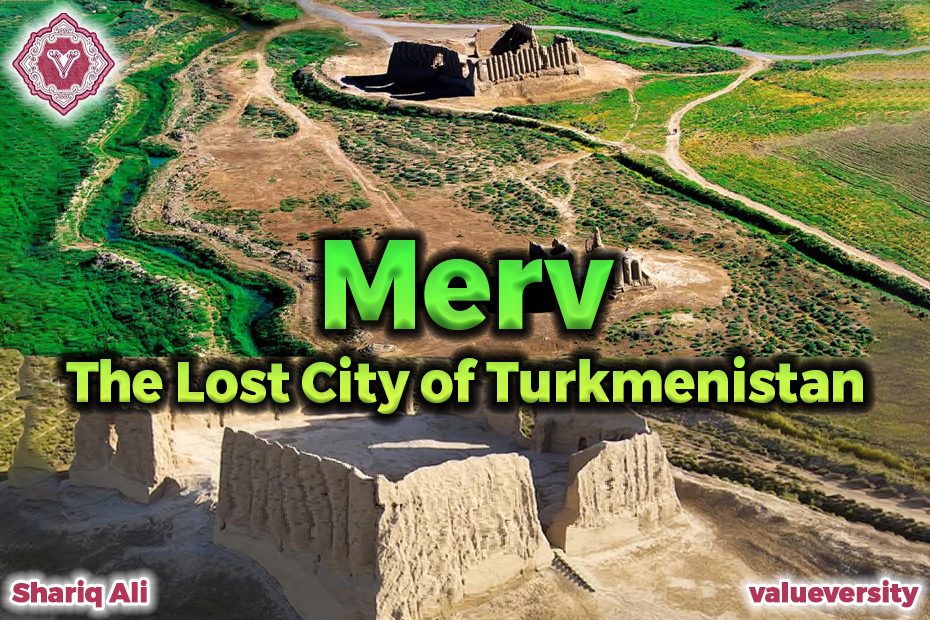Merv: The Lost City of Turkmenistan
A Forgotten Tale of the Silk Road
By Shariq Ali
Valueversity
This is the story of a city that remained inhabited for four thousand years and was abandoned only in the last two centuries. For centuries, various civilizations lived here, traded, and created remarkable architectural marvels. This city is Merv—an astonishing and nearly forgotten heritage of human history, located near the city of Mary in present-day Turkmenistan. Once, it was considered the shining jewel of the ancient world.
Merv was not just an ordinary city; it was an international hub of knowledge, culture, and commerce. The primary reason for its significance was its location on the Silk Road—that great trade route which connected the East to the West. The caravans passing through carried not only silk, spices, precious stones, and other goods, but also exchanged languages, cultures, and stories from various nations. These diverse influences made Merv a true crossroads of civilizations.
For centuries, Merv remained under the influence of great empires—Achaemenid Persia, the Macedonian Greeks of Alexander the Great, and the Seleucid rulers all ruled here. Each era left its mark: magnificent buildings, lush gardens, libraries, and centers of science and literature were established. Even during the Abbasid period, Merv retained special importance, becoming a scholarly and cultural center of the Caliphate. Prominent Muslim scholars such as the famous historian Yaqubi and scientist Omar Khayyam once resided here.
Even today, the most astonishing remnant of Merv is the Great Kyz Kala—a mysterious mud fortress with massive walls that still stand. Looking at those walls, one feels as though they still echo the whispers of ancient kings, soldiers, and scholars. The construction techniques used in this fortress are unlike any seen elsewhere in the world, making it a focal point of archaeological interest.
The story of Merv remained vibrant until the 18th century. Then, the dust of history covered it, and the city faded into silence and obscurity. Today, its ruins stand like an unfinished tale, inviting travelers to peek into the past.
So the next time you think about the Silk Road, don’t just imagine camel caravans laden with spices. Remember the travelers who journeyed alongside those caravans—their languages, their cultures, and the stories they carried. Remember the magnificent cities like Merv, which stood as glorious symbols of our shared human heritage—and which still hold open the doorway to the past.
